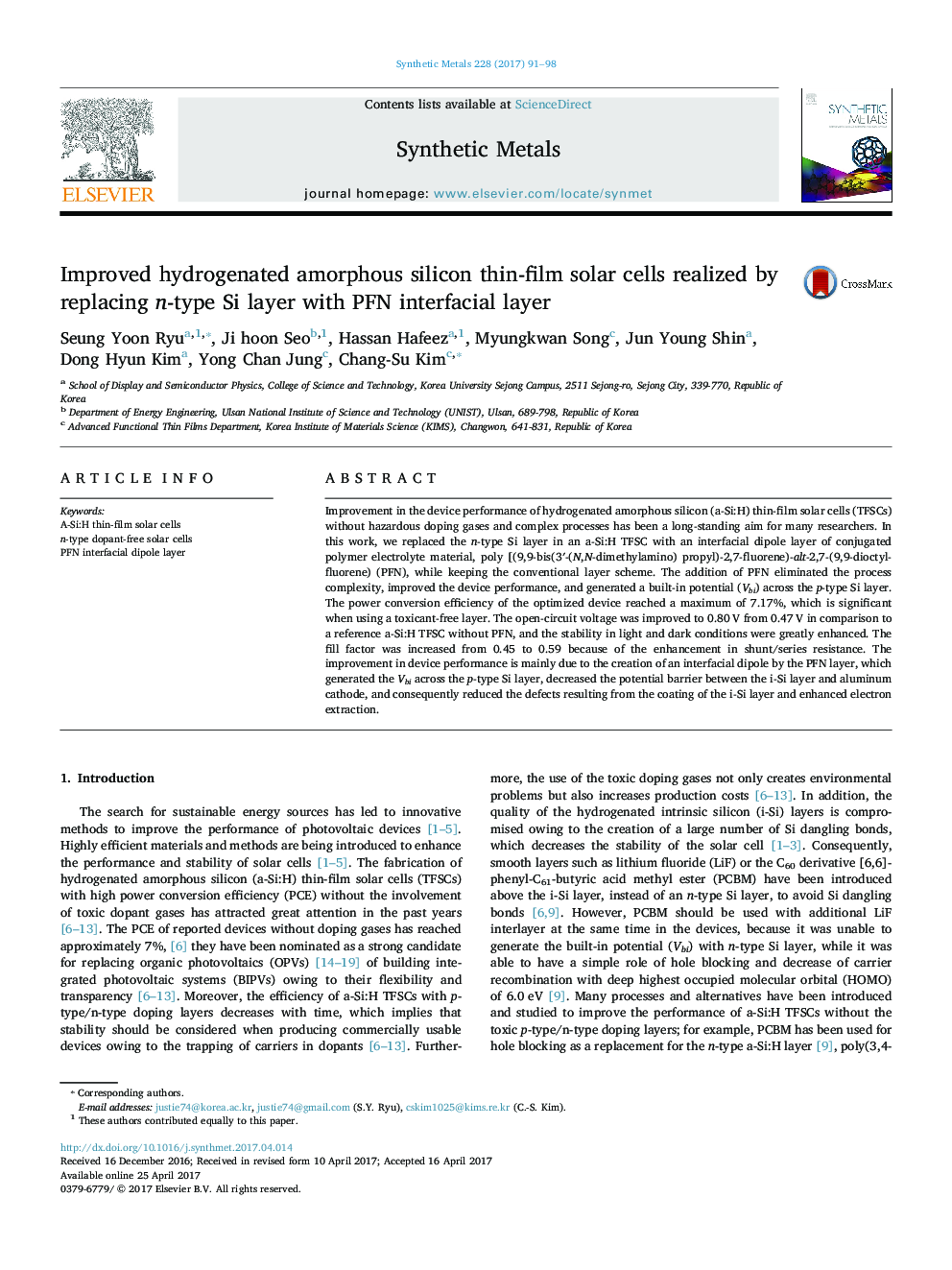| کد مقاله | کد نشریه | سال انتشار | مقاله انگلیسی | نسخه تمام متن |
|---|---|---|---|---|
| 5435460 | 1509350 | 2017 | 8 صفحه PDF | دانلود رایگان |

- Improvement in device performance of hydrogenated amorphous silicon (a-Si:H) thin-film solar cells (TFSCs).
- Replacement of n-type Si layer with PFN as an interfacial layer in conventional a-Si:H TFSCs.
- Eliminating the use of hazardous n-type doping gases.
- Induced interfacial dipole for enhanced charge transfer and electron extraction.
Improvement in the device performance of hydrogenated amorphous silicon (a-Si:H) thin-film solar cells (TFSCs) without hazardous doping gases and complex processes has been a long-standing aim for many researchers. In this work, we replaced the n-type Si layer in an a-Si:H TFSC with an interfacial dipole layer of conjugated polymer electrolyte material, poly [(9,9-bis(3â²-(N,N-dimethylamino) propyl)-2,7-fluorene)-alt-2,7-(9,9-dioctylfluorene) (PFN), while keeping the conventional layer scheme. The addition of PFN eliminated the process complexity, improved the device performance, and generated a built-in potential (Vbi) across the p-type Si layer. The power conversion efficiency of the optimized device reached a maximum of 7.17%, which is significant when using a toxicant-free layer. The open-circuit voltage was improved to 0.80Â V from 0.47Â V in comparison to a reference a-Si:H TFSC without PFN, and the stability in light and dark conditions were greatly enhanced. The fill factor was increased from 0.45 to 0.59 because of the enhancement in shunt/series resistance. The improvement in device performance is mainly due to the creation of an interfacial dipole by the PFN layer, which generated the Vbi across the p-type Si layer, decreased the potential barrier between the i-Si layer and aluminum cathode, and consequently reduced the defects resulting from the coating of the i-Si layer and enhanced electron extraction.
126
Journal: Synthetic Metals - Volume 228, June 2017, Pages 91-98